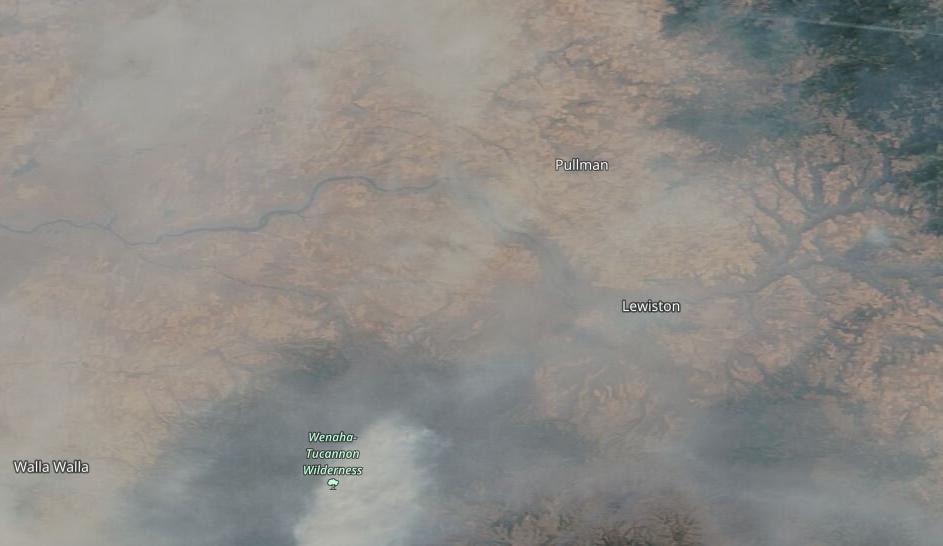As the University of Idaho’s fall semester starts up, it brings new faces and smokey air. While the smoke season is a normal phenomenon for the area, this season has started early. Despite this, university officials think closures will be unnecessary.
Luigi Boschetti, of the College of Natural Resources works with fire detection from satellite systems. He said fires started in July this season, an unusual occurrence. When there are fires in this area, smoke tends to stay.
“We have some fairly unfortunate climatic conditions that cause smoke to accumulate and stay low in the atmosphere,” Boschetti said.
UI Division Operations Officer Lee Espey said, “I would say (a closure) is unlikely to occur in general, but we obviously don’t know what could happen with this year’s smoke season being particularly bad.”
Espey said aside from closing down the university, there are other options for how the university can deal with smoke.
Fire factors
As for how severe the fire itself is, there are many local and worldwide factors playing into it, Boschetti said.
Snowpack in the winter and precipitation during the months of May, June and July make for a short period of fire danger before we get into the wet season. With that, if it is hot and windy, fires can get out of control.
Also, a factor is climate change. While climate change might not be responsible for lightning on a given day of the year or a strong wind when a fire starts, Boschetti said, if there is consistently less snowpack in March because temperatures are slightly higher, it can make for longer and more severe fire seasons.
As for the last factor, it has to do with libraries.
“My favorite analogy is that the most fire-prone environment any of us can be in is a library,” Boschetti said. “We are surrounded by highly flammable material. However, there is one piece missing: ignition. If nobody is going around throwing matches and cigarettes in a library, libraries can remain perfectly stable for hundreds of years. It’s the same with the forest. We can have extreme drought and not have fires if we don’t have ignitions.”
Smoke factors
Last September, UI and local school districts did close due to smoke, with the air quality index of Latah being considered hazardous at 333 on Sept. 12, according to the EPA.

During the worst of it this year, the air quality index was measured at 184 in Latah County on Aug. 13, only considered unhealthy. However, last year’s season did not start as early.


“We’ve been working internally on a plan to make either operational changes to buildings or take administrative actions based on how poor or how good the air quality is,” Espey said. “But all that is based off the EPA’s recommendation.”
Samir Abd El-Fatah, the executive director of the Environmental Health and Safety department, said air quality in high traffic buildings, ones like the ISUB, Kibbie Dome or SRC, are regularly tested to ensure outside air quality is not affecting it.
Espey said filtering systems should keep the air safe in campus buildings, but actions can be taken to lessen the toll it takes on filters, by converting buildings that can recirculate air to using more inside air.
“Worst case scenario would be that we think about a closure, but that hasn’t happened very often in the past,” Espey said.
Espey and Abd El-Fatah suggested that students look at the Smoke Event FAQ page on the university’s website and monitor the air quality index on airnow.gov or find the app providing forecasts.
“We have a big group that monitors smoke events,” Abd El-Fatah said. “We are not leaving our community alone.”
Cody Roberts can be reached [email protected] or on Twitter @CodyRobReports
